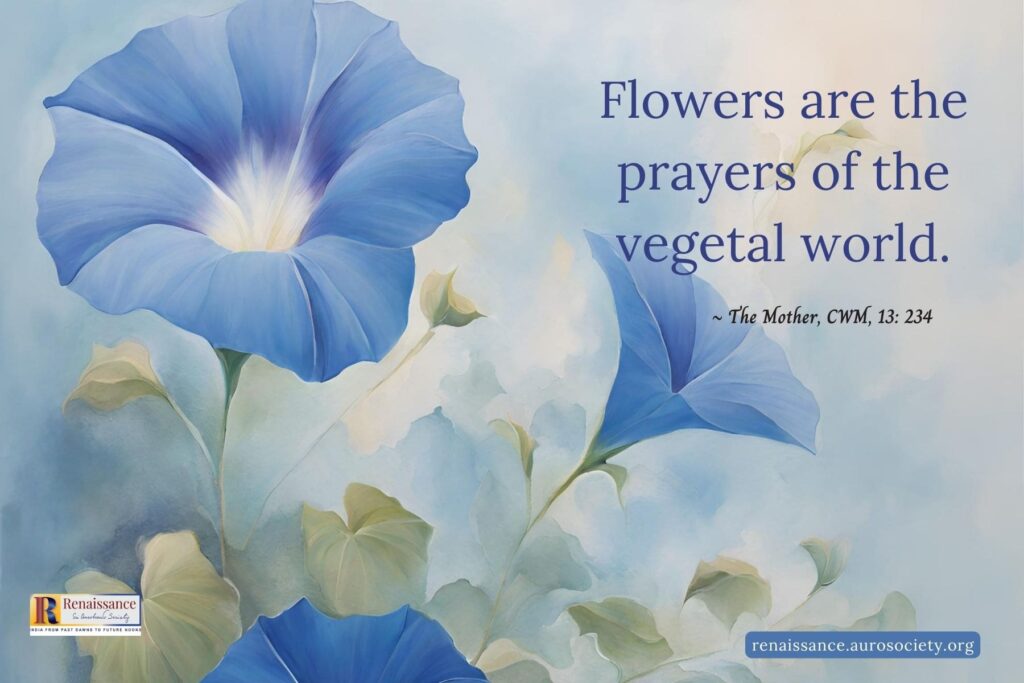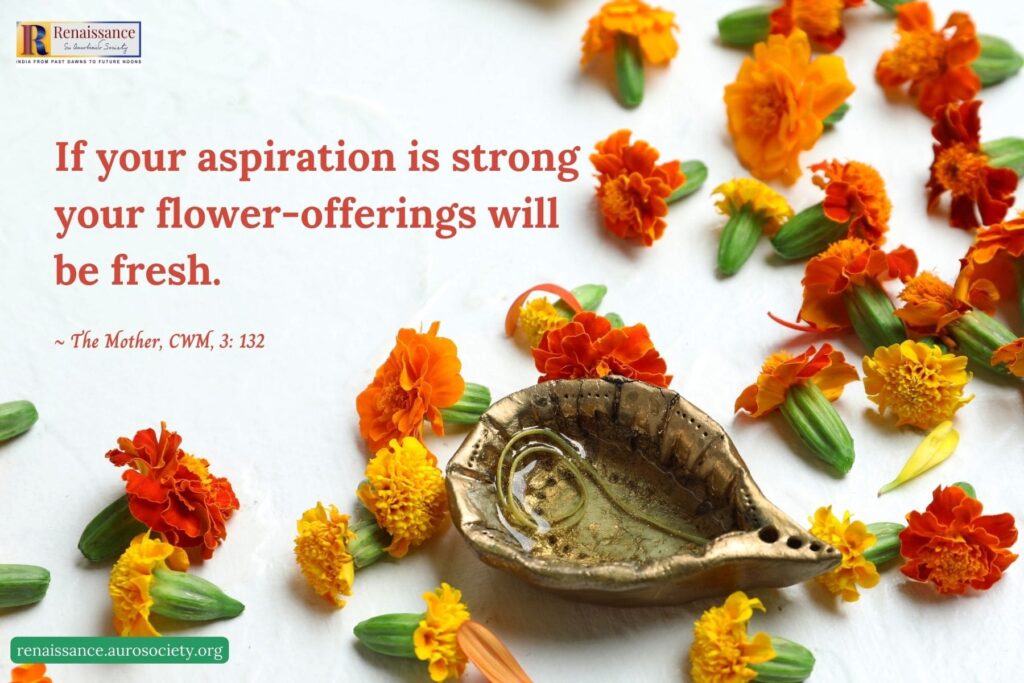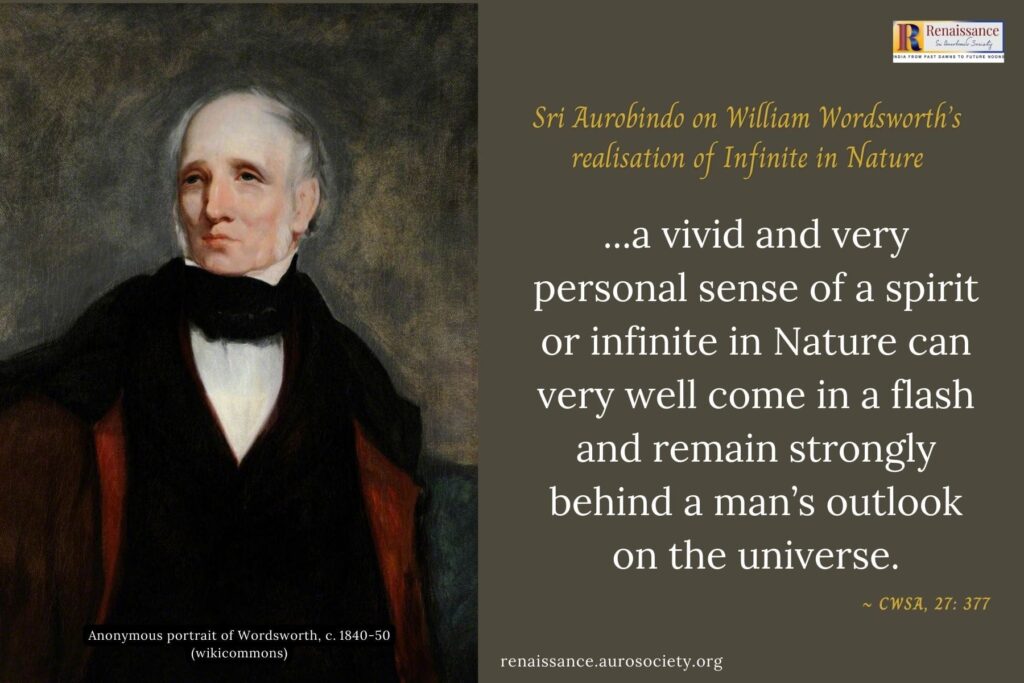Iberis, commonly called candytuft is a genus of flowering plants that belong to the family of Brassicaceae. These plants are one of a kind because they provide nourishment to a number of insects. Among them is the rare species of a butterfly named Euchloe Tagis which depends solely on these plants and their flowers for food.
Usually, we relate beautiful blossoms to divine fragrances but not so with candytuft. They don’t particularly have a pleasing smell, definitely not like candy. This is why they are great for landscaping as they keep certain invasive pests away. Candytuft flowers have their peculiar smell because of a chemical they produce, glucosinolates, which is characteristic of Brassicaceae family. There are about 30 varieties of these plants, all of which are quite popular among gardeners for their beautiful tuft like flowers and their ability to grow between rocks and staying evergreen throughout the year.
Spiritual significance of candytuft
The Mother gave spiritual significances to more than 850 different flowers, based on her inner communion with the unique vibration of the flower. Each significance speaks of an attribute or a necessary trait that we must cultivate as we progress in our inner journeys towards our own divine self. For candytuft flower, the spiritual significance she has given is — ‘equanimity’.
If you are wondering what made the Mother choose candytuft flower for equanimity, maybe the flower itself has an answer for you. Could it be that when seen from a distance the cluster of flowers looks like one flower but when we get closer we can see the individual small white flowers having their own sepals, petals and a centre?
Perhaps the same analogy can be given for our planet earth.
When seen from the sky, all life on earth appears to be moving and acting as one unit with all of us being equal and enjoying the same resources that Mother Earth gives us. Just like candytuft flowers depending on their single root and the same soil. While these plants live in harmony with nature, accepting equality among them, we as human beings work from a place of ego and thus have difficulty with equality.
That is why perhaps, the Mother wants us to meditate upon these flowers to see how we can cultivate their beautiful attribute of equanimity in our day-to-day existence. While equanimity is definitely not the same as equality, the former always leads to the latter.
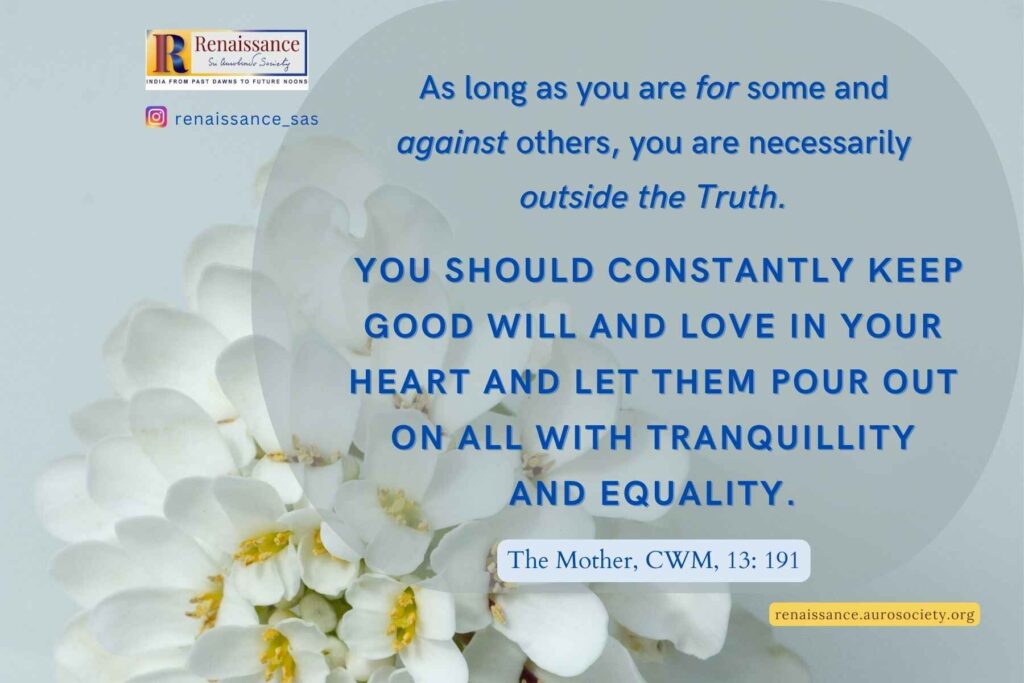
Also read:
What is Yogic Samatā?
Equality can be understood on various levels. At the outermost level of collective life, for example, it means that we all are equal not just in flesh and blood but also have equal rights and duties and privileges and responsibilities as citizens of a country. Over the long march of human history, philosophers and thinkers have spent much time deliberating on this value of equality, along with other human values such as freedom and brotherhood.
Foundation of Sadhana
As per the Indian spiritual thought, equality means an essential oneness which unites all beings, all existence. In other words, there is essentially no difference between a human being and a tree as they are both different manifestations of the same One Existence. The difference or diversity is in the manifestation which is just as true as the oneness underlying all the manifestation.
When understood in the sense of equanimity, equality means an equipoise, a state of perfect tranquillity that emerges because of an evenness of mind. In the Bhagavad Gita, the entire essence of the word ‘yoga’ is summarised as samatvam or equanimity.
योगस्थः कुरु कर्माणि सङ्गं त्यक्त्वा धनञ्जय।
सिद्ध्यसिद्ध्योः समो भूत्वा समत्वं योग उच्यते।।2.48।।
Fixed in Yoga do thy actions, having abandoned attachment, having become equal in failure and success;
for it is equality that is meant by Yoga.
As we go through all the ebbs and flows of life’s tides, by keeping a perfect inner equipoise which comes only with a perfect equality of mind and vital, one attains a Yogic equality of soul.
The equality which the Gita preaches is not disinterestedness,—the great command to Arjuna given after the foundation and main structure of the teaching have been laid and built, “Arise, slay thy enemies, enjoy a prosperous kingdom,” has not the ring of an uncompromising altruism or of a white, dispassionate abnegation; it is a state of inner poise and wideness which is the foundation of spiritual freedom.
~ Sri Aurobindo, CWSA, Vol. 19, p. 36
With that poise, in that freedom we have to do the “work that is to be done,” a phrase which the Gita uses with the greatest wideness including in it all works, sarvakarmāṇi, and which far exceeds, though it may include, social duties or ethical obligations.
Sri Aurobindo has given great importance to equanimity, calling it as a foundation of spiritual sadhana.
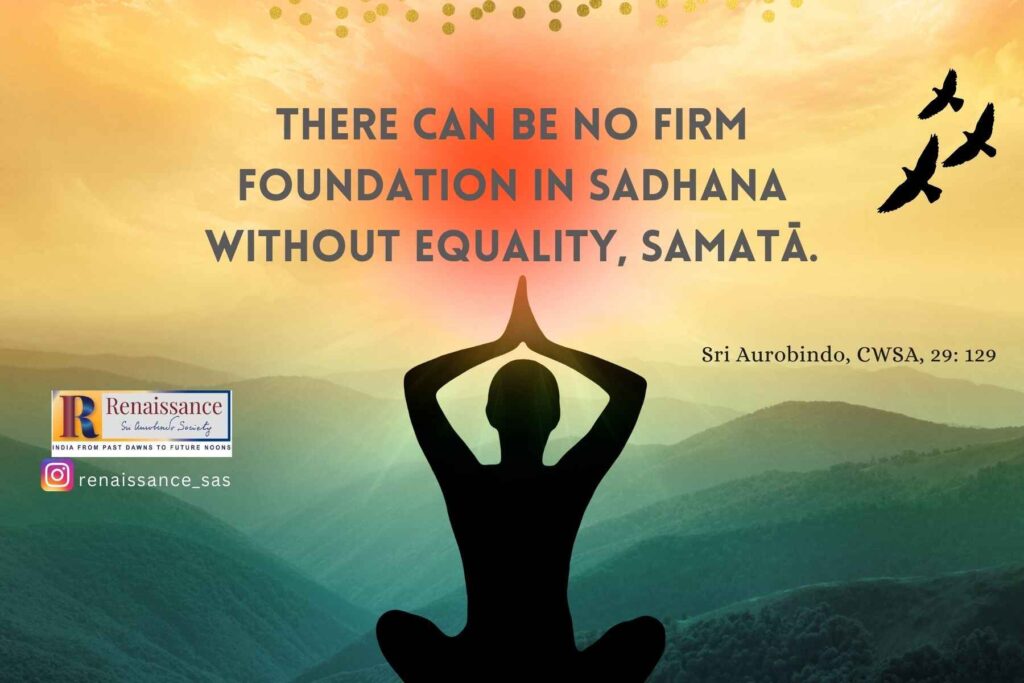
He has also explained how equanimity is not a state of indifference or being complacent. To cultivate this special trait of equanimity, one does not lose his ability to emote or becomes indifferent. Instead the idea is to gain a perfect mastery over one’s emotional and mental reactions and responses. When we light a fire, we have to learn to keep it under check or else it could cause a mayhem.
The Mother has rightly said,
“The true Agni always burns in deep peace; it is the fire of an all-conquering will.
Let it grow in you in perfect equanimity.”
~ CWM, Vol. 14, p. 159
Finding that Balance
As a teacher of hathayoga, much of my work involves emphasising the idea of bringing the left and right sides of our body and minds into balance. I wish to speak here of seven different practices that can help an individual cultivate equanimity as part of his or her self-development journey.
1. Releasing resistance: Sometimes we are faced with a situation in life, primarily arising because of external factors over which we have no control. But most often we are also so addicted to being in control that we find difficult to surrender in such situations and our mind begins to fight. Such strong opposition to what life brings us not only destroys the peace of mind but also engages the amygdala or that part of the brain which controls fight or flight response. To cultivate equanimity, one must fully accept the present moment which will then lead us to make proper decision for action.
2. Recognize what can be controlled: While this looks exactly opposite of the earlier point, it is equally true that we must learn what factors can be controlled and what we can’t. This reminds me of the famous serenity prayer by American theologian Reinhold Niebuhr:
God, grant me the serenity to
Accept the things I cannot change,
Courage to change the things I can,
And the wisdom to know the difference.
Read:
Equality and Relations with Others: Advice from Sri Aurobindo
3. Revitalize in nature: Nature always heals. No matter how tired we are, a walk in the woods revitalizes us in a beautiful way. It calms us and makes us realize that there is a bigger reality behind everything we are going through. It helps us gain a wider and deeper perspective. Taking a few deep breaths in a lush green garden or observing the dawn and dusk or planting the feet on wet grass are different ways in which we can ground ourselves.
4. Revamp your routines: Our daily routines can be a big factor when it comes to creating a balance in our lives. Setting up a nourishing healthy routine, eating at the same time of the day and going to bed at a regular hour can help us navigate our lives when other things are not going so well. Having a regular physical exercise practice, attending spiritual satsangs or reading inspirational books, going for a long hike, or even having a practice of eating dinner with family every night can create a sense of synergy and equanimity.
Click HERE to read more Flower-meditations
5. Meditation: As a long-time practitioner of meditation and as a hathayoga teacher, there is nothing better other than meditation that I can recommend to bring calm and peace which are essential for cultivating equanimity. Meditation is like a magic pill that cures everything. Many people know how to meditate but they don’t do because they find it boring. Many others try it for a few days and fall off the habit.
Meditation is not as difficult as it sounds. We sit in an easy pose, close our eyes and focus on our breath. If thoughts distract us, we bring ourselves back to our breath. Continuous practice of meditation helps us not only calm down but also improves productivity and efficiency. We sleep better and our health improves as our anxieties are kept in check.

6. Reconnecting with our values: It is important to ask ourselves from time to time — what matters to me the most. Identifying with our highest values, finding our self-worth and functioning from that place of dignity and integrity — these are some of the best gifts we can give ourselves. In the middle of hectic lives, we often end up doing more for others and in the process forgetting to take care of ourselves.
Correcting the course will not only bring back the joy and zest for life but also prepare us to give more of ourselves and support others in our lives in a more loving way. If you are a workaholic or if time spent on social media is making you feel depleted in some way, take a step back and retreat. Creating some boundaries and saying no for the sake of our health help us gradually regain an inner equipoise.
Read: The Perfect Equality of Soul and More
7. Reignite your passion: This is one of my favourite practices! As we grow older, we begin to lose the zest for life. We stop learning new things, we forget to refuel our spirits, that joy of dancing or singing old movie songs. Whenever life throws lemons at me, I enter the kitchen to make an elaborate meal. That really helps me de-stress. I encourage all to find that passion which can help them to reconnect with the joy of life.
While the challenges in life are not going to go away no matter what our age is, we must find and develop for ourselves simple practices which can help us find that inner state of equilibrium and balance. Creating balance can help soften the discomforts of life. And in time, we will find that the most difficult hurdles were in fact the biggest stepping stones in our life. Because they taught us not only resilience and endurance but also helped us grow inwardly by progressive cultivation of equanimity.
~ Design: Beloo Mehra

